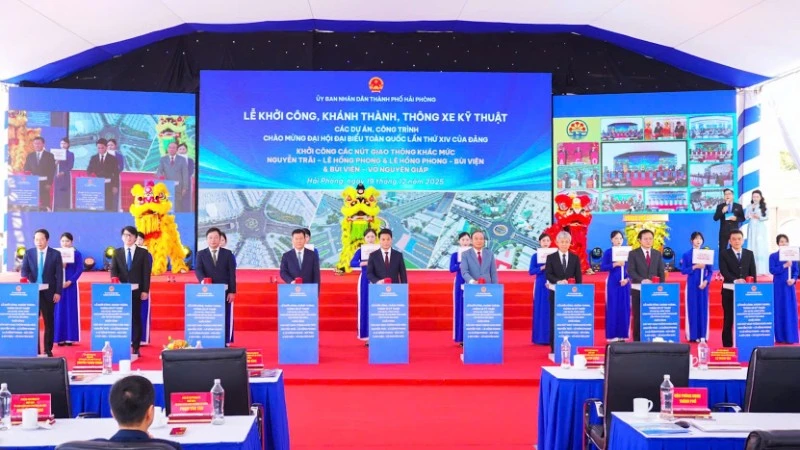Decisive and coordinated measures
From the outset, under the direction of the government, the province announced resolutions and decisions on administrative unit reorganisation, the establishment of the provincial Party Committee, and the consolidation of leadership personnel to ensure the new government apparatus became operational on July 1, 2025. As a result, the province now comprises 99 commune-level administrative units (a reduction of 214 units), 15 departments and equivalent agencies (a reduction of 15), 123 fewer divisions and two fewer sub-departments, alongside the streamlining of 184 affiliated public service units.
Vu Manh Hung, Director of the Bac Ninh Department of Home Affairs, stated: “The province has issued all necessary resolutions and decisions for appointing and assigning leaders to agencies and units in accordance with authority, ensuring organisational stability from July 1, 2025. Agencies and units have assigned responsibilities to leaders, officials, and civil servants, enabling immediate execution of duties from the outset of the mergers.” With 2,685 public provincial-level officials and 12,581 employees, Bac Ninh has ensured adequate working space and equipment to maintain normal operations, especially at provincial and commune-level administrative service centres.
The restructuring of the organisational apparatus was carried out resolutely and in synchronisation, meeting the central government’s timeline. Inspection teams led by provincial leaders visited localities to provide encouragement, assess the situation, and promptly resolve difficulties. Notably, the province focused on clear decentralisation and delegation of authority, launching 17 integrated software systems that are operating stably and uniformly.
Vuong Quoc Tuan, Chairman of the Bac Ninh Provincial People’s Committee, remarked that the post-merger operation of the two-tier local government has yielded positive results and is expected to generate fresh momentum. The working spirit of officials and civil servants has notably shifted—from merely fulfilling administrative duties to actively serving the people. Agencies and units quickly got to work, maximising the use of facilities and human resources, avoiding any disruption or delay in service. The public administrative procedures system has initially stabilised, with minor technical glitches being promptly addressed.
Streamlined and united
Within the broader picture of Bac Ninh, several localities and units have emerged as exemplary models. The provincial Department of Finance, for instance, reduced 10 divisions and ensured stable personnel deployment under the motto of “clear individuals, clear duties, clear accountability.” Director Nguyen Dinh Hieu noted that many Party members voluntarily stepped down from leadership roles, sacrificing personal interests for the collective good—an expression of strong responsibility and prioritisation of communal benefit. The department swiftly stabilised its organisation, ensuring the uninterrupted and synchronised operation of shared administrative systems and data flows.
Kinh Bac Ward, home to 84,000 residents including 1,500 business households and approximately 200 enterprises, aims to become a development hub for services, commerce, education, healthcare, transport, and tourism. Following the merger, the ward capitalised on the modern facilities of the former city administrative centre to serve its citizens.
Nguyen Manh Hieu, Chairman of Kinh Bac Ward People’s Committee, shared that the ward’s Administrative Service Centre handles more than 100 administrative procedure applications daily, primarily related to notarisation, civil status, and justice. Most applications are processed immediately; in land-related matters, citizens are guided by officials to complete their paperwork.
Notably, the number of business licence applications surged to 10–15 per day, indicating vigorous business activity in the area. Kinh Bac Ward has formed a youth team to support online procedures and allows urgent applications—such as death certificates—to be processed directly before being entered into the system. It also set up a Zalo group to connect with the provincial Administrative Service Centre for timely technical support. However, the ward is still facing challenges in unifying work practices among staff transferred from the provincial, district, and commune levels.
Tay Yen Tu Commune, a remote mountainous area formed from the merger of Thanh Luan Commune and Tay Yen Tu Town, covers 13,264 hectares and has a population of 10,612, 30.4% of whom are ethnic minorities. Immediately after becoming operational, the commune’s People’s Committee convened its first meeting to focus on working regulations, establishing specialised agencies, and consolidating human resources. Vice Chairman Nguyen Van An said: “The commune’s People’s Committee placed strong emphasis on personnel matters, swiftly stabilising the organisational structure upon the new commune’s establishment. We also reviewed and evaluated socio-economic results from the first half of the year based on data from the two pre-merger units and devised plans for the second half of 2025.”
Nguyen Viet Oanh, Chairman of the Bac Ninh People’s Council, emphasised the need for the provincial People’s Committee and relevant departments to intensify inspection and guidance for commune and ward-level governments, especially in remote areas, to address emerging issues promptly. He also called for a review and update of legal documents related to the two-tier local government model to ensure consistency from central to local levels.
Addressing bottlenecks
Despite significant progress, the operation of the two-tier local government system in Bac Ninh still faces certain shortcomings. The electronic civil status management system and the National Public Service Portal occasionally become overloaded, causing delays in application processing. Some localities have yet to be issued digital certificates or bank accounts, hindering digital signatures and online payments.
To address these issues, the province has implemented multiple solutions. The provincial Administrative Service Centre has partnered with Bac Ninh Telecom to provide technical support to all commune and ward-level service centres. Nguyen Ngoc Nam, Director of the Centre, explained: “We’ve deployed staff to provide hands-on guidance in resolving software, VNeID account, and interlinked public service system issues. We’re also assessing equipment needs and coordinating with the Department of Finance to allocate funding for uniform procurement across communes and wards.”
Additionally, the province has announced over 2,000 administrative procedures, integrated them into the National Public Service Portal, conducted staff training, and issued guidelines for 40 implementation tasks. Shared IT systems have been upgraded to transcend administrative boundaries and now operate smoothly.
Despite its focus on organisational restructuring, Bac Ninh collected over 41 trillion VND (1.56 billion USD) in budget revenue in the first half of the year, achieving 72.9% of the annual target. The province attracted more than 12.04 million USD in converted investment capital. In terms of FDI alone, Bac Ninh ranks second nationwide, trailing only Ha Noi. Key growth drivers such as manufacturing, services, and tourism have gained momentum, while the investment environment has improved thanks to accelerated public investment disbursement and effective utilisation of trade agreements.
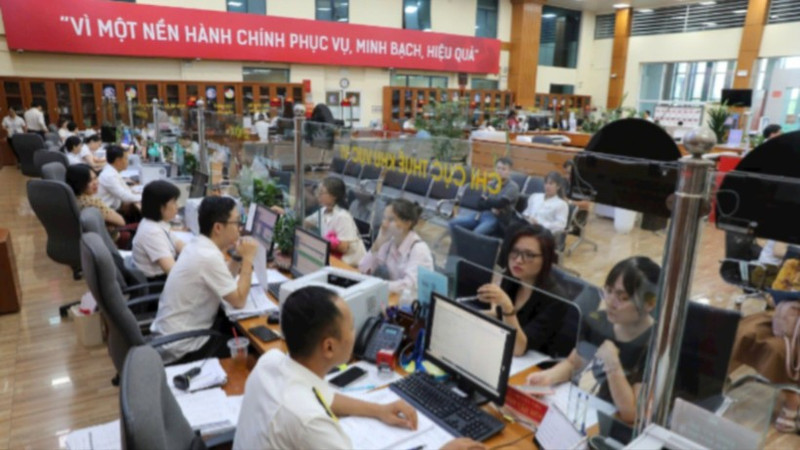


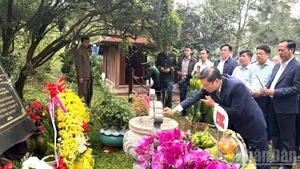

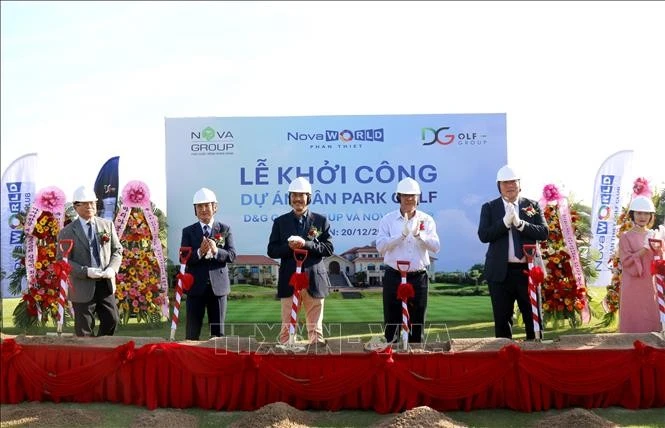
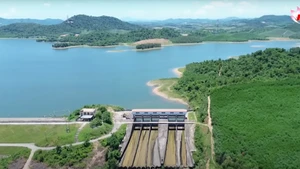



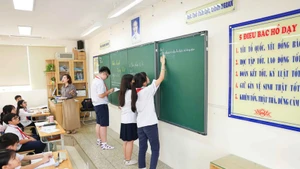

![[In Pictures] Nhan Dan Newspaper and Coteccons launch the Building Tet 2026 Programme](https://en-cdn.nhandan.vn/images/5992a12dd6e78b9bfb434962ff18307331f51c4c3a3e5fcfcd42f0234766d9c45840b0c6e06f3d50c1b8ba0f0abda1a6b665eff40edce9ec48a5692486f5a3ef/201225-xay-12.jpg.webp)



